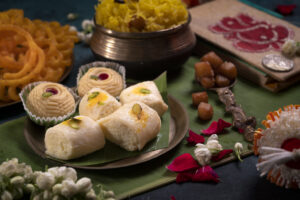Authentic Mughlai Korma Recipe – Veg or Chicken Delight
Cuisine: Mughlai
Korma is a rich, aromatic dish that hails from the kitchens of Mughal royalty. Known for its creamy texture and gentle spices, this dish is perfect for special occasions or cozy family dinners. The delectable blend of nuts, yogurt, and spices creates a flavor profile that is both comforting and extravagant. Mughlai cuisine truly comes alive when you indulge in this delightful korma, whether you’re choosing chicken or exploring its vegetarian counterpart.
Table of Contents
ToggleThis recipe offers a harmonious balance between tradition and personal taste, allowing you to experiment with various ingredients like vegetables or meat. For instance, while we will focus on a classic korma recipe, you can also find exciting variations such as Awadhi Korma or Hyderabadi Korma, each adding their unique flare to this timeless dish. No matter your choice, preparing this korma at home promises an experience that captures the essence of Mughlai heritage.
Ingredients for Korma (Serves 4)
| Chicken (or Mixed Vegetables) | 500g |
| Yogurt | 200g |
| Onion (finely sliced) | 2 medium |
| Ginger-Garlic Paste | 2 tablespoons |
| Cumin Seeds | 1 teaspoon |
| Coriander Powder | 1 tablespoon |
| Garam Masala | 1 teaspoon |
| Cashew Nuts | 50g |
| Oil or Ghee | 3 tablespoons |
| Salt | to taste |
| Cilantro (for garnish) | to taste |
Preparation Steps for Korma
Get ready to create a korma that will leave your family and friends asking for more. Follow these step-by-step instructions to ensure perfect execution.
- Start by marinating the chicken (or vegetables) in yogurt, ginger-garlic paste, and a bit of salt for at least an hour.
- Heat oil or ghee in a heavy-bottomed pot. Add cumin seeds and let them splutter.
- Add the sliced onions and sauté until golden brown.
- Incorporate the marinated chicken (or veggies) and cook until they are browned on all sides.
- Stir in the coriander powder and garam masala. Mix well to coat the pieces.
- Add a splash of water, cover, and simmer until the meat is tender (or veggies are cooked through).
- Toast the cashew nuts in a small pan until light golden and sprinkle over the cooked korma before serving.
- Garnish with fresh cilantro before serving hot with naan or rice.
Nutritional Information per Serving
| Calories | 450 |
| Protein | 25g |
| Fat | 30g |
| Carbohydrates | 20g |
| Fiber | 2g |
Serving Suggestions
This korma is an excellent choice for special occasions or everyday meals. It pairs beautifully with naan or steamed rice, making it versatile for Kids and Office Tiffin. You can even pack it in lunchboxes paired with some roti for a fulfilling meal.
Cultural Story Behind Korma
Korma is more than just a dish; it’s a celebration of rich traditions and flavors passed down through generations. Often served during festivities and special occasions, this dish carries the essence of Mughlai culinary art. The history of korma traces back to the Mughal Empire, where royal kitchens birthed this indulgent dish, using ingredients that signified opulence, such as yogurt, nuts, and a wealth of spices.
In many families, preparing korma can be a shared experience, weaving memories through the aroma and richness that fills the air. Picture a festive gathering where the elder matriarch teaches the younger generation about the nuances of balancing spices and ensuring the right consistency; this live storytelling unfolds over simmering delights. Moreover, if you are thinking of starting a food business around korma, the market potential is immense. With the growing interest in ethnic cuisines globally, specializing in korma could attract food enthusiasts looking for authentic experiences.
The rise of food trucks and delivery services has opened doors for aspiring chefs to present their take on Korma, whether it’s a traditional version or a fusion dish incorporating local ingredients. Competitors may include established Indian restaurants and home-cooked meal services, but with creativity and authenticity, your brand can stand out. Emphasizing quality, consistency, and enriching storytelling through food can connect deeply with customers, leading to a sustainable venture that honors this cherished dish.




